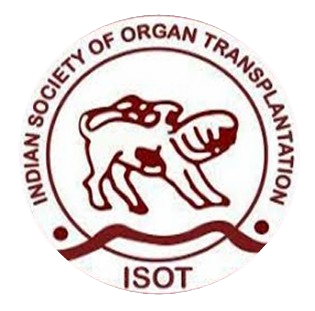
World's First Heritage City - Ahmedabad
Ahmedabad, located in the western Indian state of Gujarat, is a city rich in history and culture. It is renowned for its architectural heritage, which blends Hindu, Islamic, and colonial influences. In 2017, UNESCO declared the city's historic center, known as the "walled city," as a World Heritage City, recognizing its significance and preservation of its cultural heritage.
A city steeped in history and culture, offers a mesmerizing blend of tradition and modernity. As one of India's oldest cities, its heritage can be felt in every corner, from the intricately carved temples of the Old City to the serene Sabarmati Ashram, where Mahatma Gandhi once resided.
In modern Ahmedabad, soaring skyscrapers and bustling markets stand alongside centuries-old monuments, creating a unique tapestry of old-world charm and contemporary dynamism. Whether wandering through the narrow lanes of the UNESCO-listed Pols or exploring the modern architecture of the Gujarat International Finance Tec-City (GIFT City), Ahmedabad captivates with its rich heritage, cultural vibrancy, and forward-looking spirit.
Explore
Ahmedabad & Nearby Attractions
Gandhi Ashram
Sabarmati Ashram (also known as Gandhi Ashram) is located in the Sabarmati suburb of Ahmedabad, Gujarat, adjoining the Ashram Road, on the banks of the River Sabarmati, 4 miles (6.4 km) from the town hall. This was one of the many residences of Mahatma Gandhi who lived at Sabarmati (Gujarat) and Sevagram (Wardha, Maharashtra) when he was not travelling across India or in prison.
Hutheesing Jain Temple
Hutheesing Jain Temple Located in the city of Ahmedabad in Gujarat, Hutheesing Jain Temple was constructed in 1848 and is dedicated to Lord Dharmanath, the fifteenth Jain Tirthankar. The plan of building a grand temple was initiated by Shet Hathisinh Kesarisinh. Unfortunately, he died before the completion of the temple and hence, his wife had to come forward to complete the formation of the Hutheesing Jain Temple.
Atal Bridge
This iconic Atal bridge is the first of its kind in the country. It will connect the west and east parts of the Sabarmati Riverfront. It has drawn inspiration from the Kites and the celebration of Uttrayan. Even the colours chosen reflect the hues of the kites. To feel the joy of walking above the river, this glass Atal bridge is constructed between Sardar Bridge and Ellis Bridge. The bridge is solely for walking purposes and also has seating arrangements for the people to enjoy the beauty of the river from the bridge. Plantation of various trees is also done to have some green cover on the bridge.
Sidi Saiyyed Mosque
This mosque is one of the most famous mosques in Ahmedabad. The Sidi Saiyyed Mosque is popularly known as Sidi Saiyyed Ni Jali. It was built by Sidi Saiyyed in the retinue of Bilal Jhajar Khan, general in the army of the last Sultan Shams-ud-Din Muzaffar Shah III of the Gujarat Sultanate. It is situated in the heart of the 600-year-old walled city of Ahmedabad. The design of the mosque is entirely in the arcuate system of construction.
Bhadra Fort
Climb up the Bhadra Fort and get a bird’s eye view of the old city. Built immediately after the founding of Ahmedabad in 1411, Bhadra Fort now houses government offices and a Kali temple. Its gate formed the eastern entrance of the Ahmedabad citadel, which stretched west to the river. From the roof, you can check out the imposing structure and views of the surrounding streets. Between the fort and the Teen Darwaja (Triple Gateway) to its east was the Maidan Shahi (Royal Square), where royal processions and polo games took place.
Rani Sipri's Mosque
Rani Sipri’s Mosque also known as Rani Sipri ni Masjid or Masjid-e-nagina, formerly known as Rani Asni’s Mosque, is a medieval mosque in the walled city of Ahmedabad, Gujarat in India. This mosque was commissioned in 1514 by Queen Sipri, the Hindu wife of Mahmud Begada, a sultan who ruled Gujarat.
Jagannath Temple
The Jagannath Temple is a temple dedicated to the Hindu God Jagannath in the city of Ahmedabad in the Gujarat state of India. The temple located in the Jamalpur locality was established by Sadhu Sarangdasji about 450 years ago. The temple is famous for its annual chariot festival, the Rath Yatra, which is the third most important and largest after the Ratha Yatra at Puri.
Iskcon Temple
At a distance of 13 km from Ahmedabad Junction, ISKCON Temple is a Hindu temple located on Sarkhej-Gandhinagar Highway in Ahmedabad, Gujarat. Also known as Sri Radha Govind Dham, it is one of the top places of pilgrimage in Gujarat and among the famous places to visit in Ahmedabad. ISKCON Temple in Ahmedabad is dedicated to Lord Krishna and his beloved lover Radha. The temple was opened in 1997 on the orders of A. C. Bhakti Vedanta Swami Prabhupada, the founder of the ISKCON Society. The temple has much significance as it is still considered the most popular temple in Ahmedabad.
Riverfront Flower Park
To witness the beauty of the nature, Flower Park offers variety of flowers to enthuse the feeling of joy and happiness in oneself. There are more than 72 varieties of species in this Garden full of flowers located near Ellisbridge. The unique feature of this Garden is that it has been differentiated on the basis of fragrance, theme, leaf color and many other things. This 3.85 Hectare park also has a valley of flowers to offer many different flowers at one place.
Kankaria Lake
Kankaria Lake is the second largest lake in Ahmedabad, Gujarat, India. It is located in the south-eastern part of the city, in the Maninagar area. It was completed in 1451 during the reign of Sultan Qutb-ud-Din Ahmad Shah II though its origin is placed in the Chaulukya period sometimes. A lakefront is developed around it, which has many public attractions such as a zoo, toy train, kids city, tethered balloon ride, water rides, water park, food stalls, and entertainment facilities. The lakefront was revamped in 2007–2008.
Dada Hari Stepwell
The stepwell was built in 1485 by Dhai Harir, a household lady of Mahmud Begada according to the Persian inscription in the stepwell. She was the superintendent of the royal harem. Dhai Harir built a mosque and a tomb in which she was buried. The good bears two inscriptions, one in Sanskrit on the south, and one in Arabic on the north wall, of the first gallery. Dated the metropolis of the kingdom the 2nd of Jamadi-ul-awwal in the 26th year of the reign.
Akashardham
‘Akshardham’ literally means the divine abode of God. Swaminarayan Akshardham at Gandhinagar is a mandir – a Hindu house of worship, a dwelling place for God, and a spiritual and cultural campus dedicated to devotion, education and unification. Timeless devotional messages and vibrant Hindu traditions are echoed in its art and architecture. The mandir is a humble tribute to Bhagwan Swaminarayan (1781- 1830) and the avatars, devas and sages of Hinduism.

